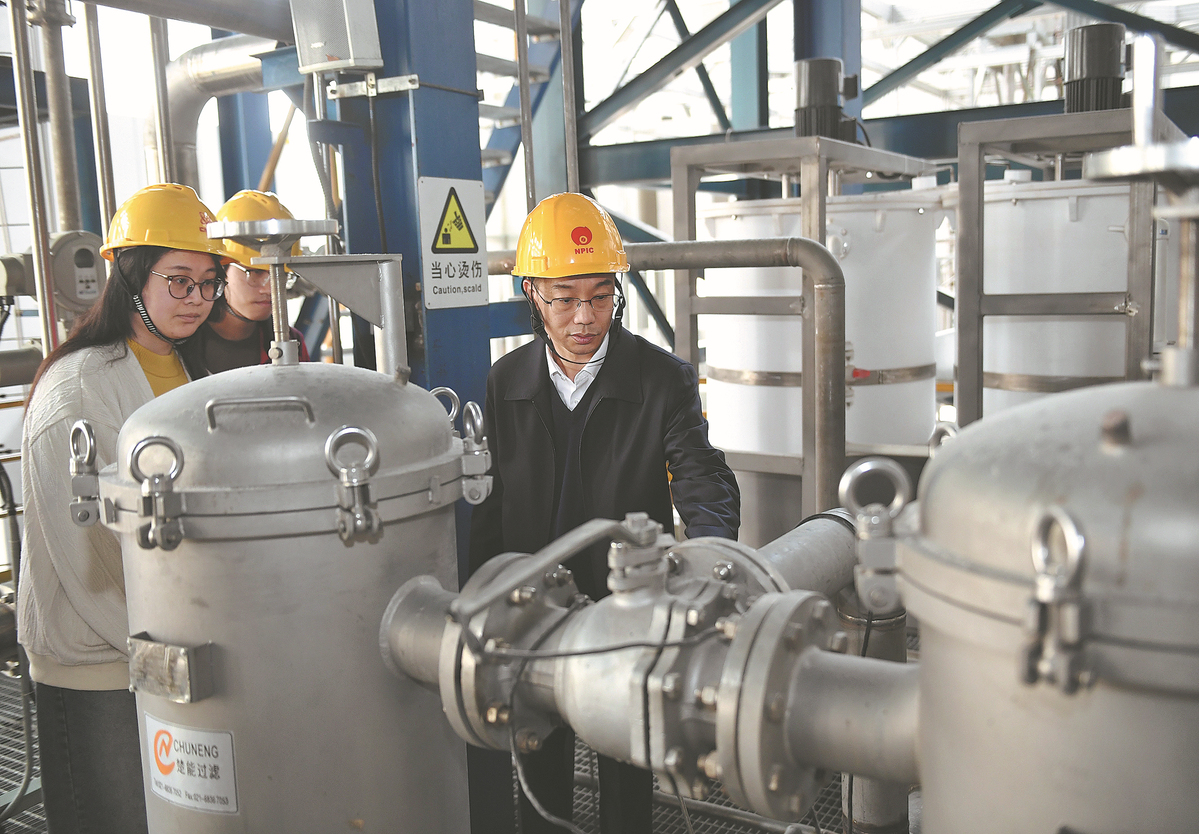Nuclear power key to sustainable, greener energy
In past 10 years, nation adds 37 reactors, bringing total to 55, says IAEA


China has been rapidly outpacing the rest of the world in nuclear power development in recent years, adding new reactors at a pace unmatched by any other nation.
With a clear and strategic focus on bolstering its energy mix, China has become the world's largest proponent of nuclear energy power, leveraging massive market potential and technological advancements. As the country accelerates its push to meet ambitious carbon neutrality goals before 2060, nuclear energy is emerging as a crucial pillar of its energy future.
Wang Hongzhi, head of the National Energy Administration, said China's nuclear power development advanced steadily and decisively throughout 2024, with 11 new reactors added, and five projects approved — including the Jiangsu Xuwei Nuclear Power Heating Plant, the world's first to combine high-temperature gas-cooled reactors with pressurized water reactors.
This brought the total number of operational and approved reactors under construction nationwide to 102, with an installed capacity reaching 113 million kilowatts — cementing China's status as a global nuclear power leader, Wang said.
China's nuclear sector is set to expand further in 2025, with operational capacity expected to reach approximately 65 million kW by year-end. Several coastal projects are also slated for approval and construction, injecting fresh momentum into the country's energy supply, according to the administration.
CITIC Securities projects that the accelerated approval of nuclear power projects is expected to lead to the growth of China's related industry chain. It expects the value of investments in new nuclear power plants will hit 231 billion yuan ($31.58 billion) this year.
In the past 10 years, China has added 37 nuclear reactors, bringing its total to 55, according to data from the International Atomic Energy Agency (IAEA). Over the same period, the United States — currently the world leader in reactor count with 93 units — has only added two.
This growth trajectory is expected to continue, with China planning to approve six to eight new reactors annually, as part of an effort to rapidly scale up its nuclear energy production, said the China Nuclear Energy Association.
With China developing its nuclear power sector as part of a broader push on renewables and domestic energy security, nuclear is set to contribute about 10 percent of power generation in the country by 2035 and 18 percent by 2060, with a total generation capacity of 400 gigawatts by 2060, the association said.
Wang Shoujun, president of the Chinese Nuclear Society, said China has risen from being a novice to a pioneer in the nuclear power industry after more than 30 years of development.
Chinese firms such as China National Nuclear Corp (CNNC) and China General Nuclear Power Corp (CGN) are now among the most advanced in the sector, surpassing many Western counterparts in terms of both reactor designs and deployment speed.
The country's nuclear power sector has seen huge progress in localizing nuclear technology, including its third-generation Hualong One pressurized water nuclear reactor design — a Chinese reactor with full proprietary intellectual property rights — which is also one of the most widely accepted third-generation nuclear power reactors on the market, he said.
CNNC and CGN, responsible for some of the most advanced reactors currently under construction, are not only advancing the domestic nuclear power industry, but are also making strides in exporting Chinese-designed reactors.
Agreements with Pakistan and Argentina for the construction of Hualong One reactors mark China's entry into the global nuclear export market, signaling China's nuclear power technology and overall competitiveness among the world's top players.
According to CNNC, the total number of Hualong One nuclear power units in operation and under construction, both domestically and internationally, has reached 33, making it the most numerous third-generation nuclear power technology in terms of units in operation and under construction worldwide.
Industry experts predict that China's nuclear capacity could double by 2030, with a significant portion of this growth coming from domestically developed reactor designs like Hualong One.
"The central government's backing is crucial to achieving the scale and speed of development seen in China's nuclear sector," said Lin Boqiang, head of the China Institute for Studies in Energy Policy at Xiamen University.
Lin said China's push for nuclear energy is closely tied to its ambitious green transition goals, as the country aims to phase out coal to achieve carbon neutrality by 2060.
However, transitioning to clean energy while meeting its massive energy demands requires a reliable and consistent power source that can handle baseload demand — the minimum level of energy required to keep the economy running smoothly. Compared with wind and solar power, which, while rapidly growing, cannot reliably meet this demand on their own due to their intermittent nature, nuclear energy is well-suited to fill this gap with its ability to provide steady and uninterrupted power, he said.
Compared with many wind and solar projects, which are located far inland and thus create challenges related to long-distance transmission, most of China's nuclear reactors are located on the eastern coastline, near major population centers, making it easier to supply energy to where it is most needed, he added.




































